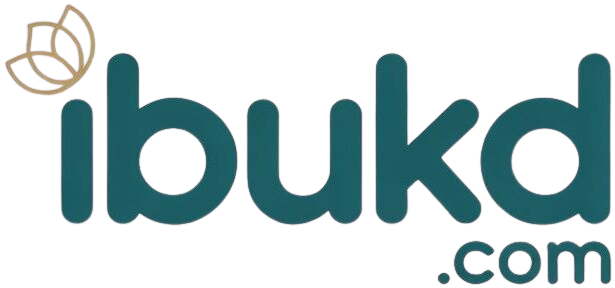Introduction to the topic
In today’s fast-paced business landscape, efficiency and adaptability are more crucial than ever. Companies constantly seek innovative ways to streamline their processes and improve project management. Enter Sinkom—a modern solution that promises to revolutionize how teams collaborate and execute tasks. But how does it stack up against traditional methods? This blog post delves deep into the nuances of Sinkom, comparing its features with conventional approaches while highlighting both advantages and limitations. Whether you’re a seasoned project manager or just starting in your career, understanding these dynamics could help shape the future of your business operations. Let’s explore what makes Sinkom stand out in a crowded marketplace!
What is Sinkom?
Sinkom is an innovative project management tool designed to streamline workflow and enhance team collaboration. Built for versatility, it caters to various industries, from tech startups to large enterprises.
At its core, Sinkom integrates multiple functions into a single platform. This allows teams to manage tasks, track progress, and communicate in real-time without switching between different applications.
The user interface is intuitive and aesthetically pleasing. Users can customize their dashboards according to their specific needs, making navigation straightforward even for newcomers.
Moreover, Sinkom leverages data analytics to provide insights that help in decision-making processes. By focusing on efficiency and adaptability, it positions itself as a modern solution for dynamic work environments.
How does Sinkom differ from traditional methods?
Sinkom revolutionizes project management by embracing a more integrated approach compared to traditional methods. While conventional techniques often rely on linear processes, Sinkom promotes collaboration and adaptability.
One of the key differences lies in real-time data sharing. Traditional systems can leave teams waiting for updates, leading to delays. Sinkom allows instant access to information, enhancing decision-making speed.
Moreover, traditional methods typically silo departments, causing communication breakdowns. In contrast, Sinkom fosters cross-functional teamwork where insights flow freely across all levels of an organization.
Flexibility is another standout feature. Where traditional approaches might stick rigidly to predefined plans, Sinkom adapts dynamically as projects evolve and new challenges arise. This agility helps teams navigate uncertainties with confidence.
By leveraging modern technology and innovative practices, Sinkom sets itself apart from outdated methodologies that may hinder progress rather than drive it forward.
The benefits of using Sinkom
Using Sinkom transforms the way teams approach project management. Its streamlined interface simplifies collaboration, making it easy to share updates and feedback in real-time.
One of the standout benefits is enhanced efficiency. With automated workflows and task tracking, projects move forward without unnecessary delays. Teams can focus on what truly matters.
Additionally, Sinkom fosters transparency within organizations. Everyone stays informed about project progress, which builds trust among team members. This openness often leads to improved morale and productivity.
The integration capabilities with existing tools are also noteworthy. Whether you’re using CRM systems or communication platforms, Sinkom connects seamlessly to enhance your workflow further.
Data-driven insights help businesses make informed decisions quickly. Analyzing performance metrics becomes straightforward, allowing for strategic adjustments that could lead to better outcomes.
The limitations of Sinkom and traditional methods
Sinkom, while innovative, has its limitations. One major concern is the reliance on technology. If users face connectivity issues or technical glitches, productivity can suffer.
On the other hand, traditional methods also have drawbacks. They often involve extensive paperwork and manual tracking, which can be time-consuming and prone to human error.
Additionally, Sinkom may not yet be fully compatible with all existing tools used by businesses today. This could complicate integration for some teams who rely on legacy systems.
Traditional approaches lack flexibility as well; they tend to follow rigid structures that might stifle creativity in project execution. Teams seeking agility may find them cumbersome compared to more modern solutions like Sinkom.
Both options present challenges that need careful consideration based on individual organizational needs and resources available for implementation.
Real-life examples and case studies of successful implementation
Companies across various industries have embraced Sinkom, showcasing its adaptability and effectiveness. A tech startup in Silicon Valley implemented Sinkom to streamline their product development process. They reported a 30% reduction in time-to-market for new features.
In the healthcare sector, a mid-sized clinic adopted Sinkom to improve patient management systems. By centralizing communication and scheduling, they enhanced patient satisfaction scores significantly within months.
Another example comes from an e-commerce retailer that used Sinkom to optimize inventory management. The result? Decreased overhead costs and improved stock turnover rates.
These cases illustrate how businesses are leveraging Sinkom’s innovative approach to tackle specific challenges effectively. Each implementation highlights unique benefits tailored to different operational needs while paving the way for future advancements in project management strategies.
Which method is right for your business?
Choosing the right method for your business hinges on several factors. Consider the size of your team and the complexity of your projects. Sinkom shines in environments that thrive on collaboration and real-time updates.
Evaluate your existing workflows. If you’re accustomed to traditional methods, a transition might require training and adaptation. Assess whether your team is ready for a change.
Budget plays a crucial role too. While Sinkom may offer advanced features, traditional methods could be more cost-effective for smaller operations or startups.
Think about scalability as well. Sinkom provides tools designed to grow with you, adapting as project demands increase.
Gather feedback from team members who will use these systems daily. Their insights can reveal preferences that align with both productivity and comfort levels within the workplace environment.
Conclusion: Why Sinkom may be the future of project management
The shift towards innovative project management tools is undeniable. Sinkom stands out as a modern solution designed to meet the demands of today’s fast-paced business environment. It offers a streamlined approach that traditional methods often struggle to match.
Businesses face increasing pressure to deliver results quickly and efficiently. Traditional methodologies can be cumbersome, relying heavily on outdated processes that slow down progress. Sinkom simplifies these challenges with its user-friendly interface and advanced features tailored for collaboration.
By embracing technology like Sinkom, companies can enhance productivity and foster better communication among team members. Its cloud-based system allows for real-time updates and accessibility from anywhere, breaking down geographical barriers that may hinder collaboration in traditional settings.
While there are limitations associated with both Sinkom and conventional methods, it’s evident that many organizations are finding success by integrating new technologies into their workflows. Real-life case studies highlight how teams have improved efficiency while reducing overhead costs through effective implementation of Sinkom.
Choosing the right method depends on your specific needs. However, as more businesses recognize the value of adaptability and innovation in project management, it’s clear that tools like Sinkom could shape the future landscape of work dynamics significantly.
As industries evolve rapidly, staying ahead requires agility—something Sinkom promises to deliver consistently in an ever-changing world.

